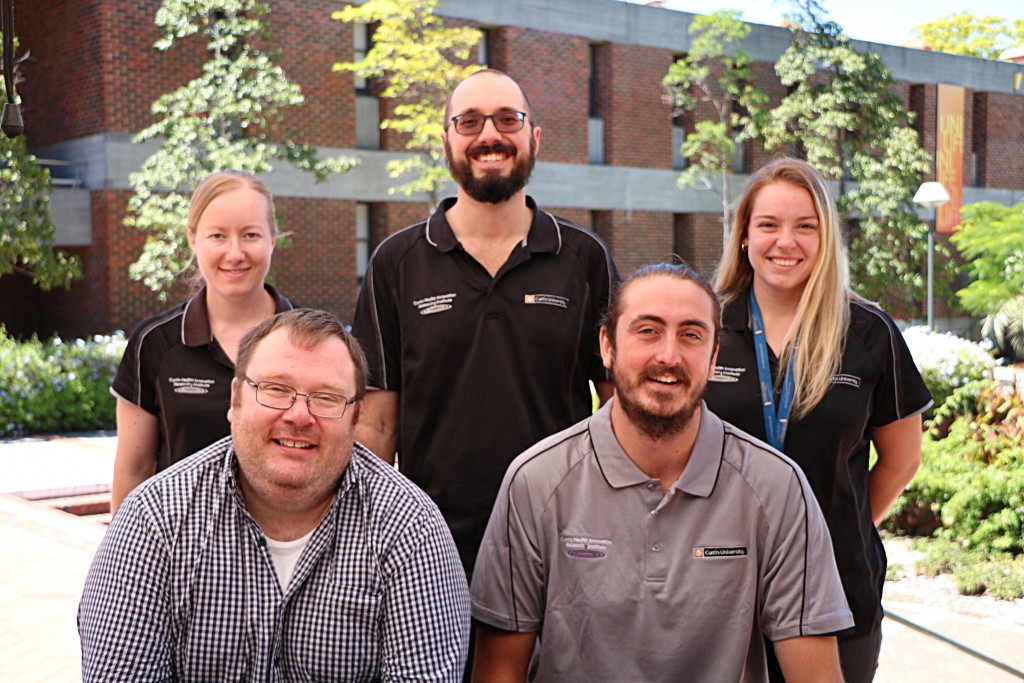 Back row l-r: Kelsi Wells, Rob Steuart & Amy Black
Back row l-r: Kelsi Wells, Rob Steuart & Amy Black
Front row l-r: Carl Mousley & Kofi Stevens
Dear friends of CHIRI, what a tremendous outcome for CHIRI-postgraduate students and early career research scientists to have published in the prestigious journal Proceedings of the National Academy of Sciences. Lead postgraduate student Kofi Stevens with Amy Black and Research Assistant Kelsi Wells, enjoy supervision and strong support of the ever enthusiastic Dr Carl Mousley and Dr Rob Steuart, with mentorship support by Prof Colin Stirling.
For those less familiar with the scientific relevance of the study, the findings shed important information on how toxic material may form in certain diseases such as diabetes or Alzheimer’s disease.
Reducing the sweetness of protein folding in the ER: Diminished Ost3-dependent N-glycosylation of the BiP nucleotide exchange factor Sil1 is an adaptive response to reductive ER stress
www.pnas.org/content/114/47/12489
Protein secretion is the process in which cells release proteins, which are produced inside them (intracellularly), into the external environment. In fact professional secretory cells such as plasma cells that produce antibodies and pancreatic β-cells that produce insulin secrete the majority of the protein they produce. Proteins that are secreted are assembled in a cellular compartment, or organelle, called the endoplasmic reticulum (ER). Here proteins are folded into the correct shape or conformation so that they are functional. Proteins can also be modified by the attachment of sugar residues, a process referred to as glycosylation, which is required for the correct folding and function of some proteins. The structure of proteins can also be stabilised by the formation of a chemical bridge known as a disulphide bond between two cysteine amino acids. The formation of these bonds can only be catalysed in the ER due to the unique, oxidising environment of this organelle. However, the extent in which disulphide bond formation is conducted in professional secretory cells is such that the oxidising environment of the ER becomes reduced. This cytotoxic state is referred to as reductive stress. We set out to identify adaptive responses that ensue when cells are placed under reductive stress. We found the glycosylation of a protein, Sil1, which is required to facilitate the folding of secretory proteins is diminished upon reductive stress. Our genetic analyses found this altered glycosylation profile to be an important response as we observed the unglycosylated form of Sil1 to be more active than its glycosylated counterpart. We anticipate that this adaptive response is required to increase the folding capacity of the ER during reductive stress in order to prevent the pathological accumulation of misfolded protein.